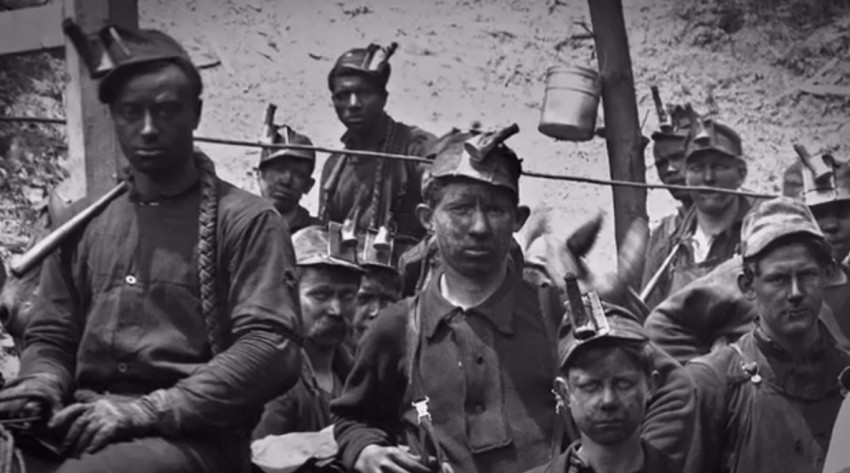

Share
When Workers Shot Back “argues that the escalation of working-class conflict drives rather than reacts to capital’s consolidation and reorganisation”, examining, “why workers were more likely to shoot back.” Robert Ovetz specifically analyzes the virtually uninterrupted bloody history of labor violence from 1877-1921.
Situated as a study of class struggle, Overtz draws from history to examine the interaction between workers and corporate forces and the intersection with the state. As Ovets explains, “identifying the complex causal factors that produce political violence in class struggle is the objective of this book.” Ultimately Ovetz centers a class analysis within theories of revolution and mass movements.
By exploring the nuance of the struggle, Overtz is able to challenge the “Origination Fallacy.” “The lesson is that the Keynesian wage-productivity deal was born not from the much-heralded New Deal, but rather from the wildcat strike during WWI.” However, “without an analysis of the conditions in which violence is deployed by insurgents, the appearance of violence is perceived to be the starting point of the insurgency.”
Provocative and thoughtful in its assertions, Ovetz writes that his book has two objectives, “First it seeks to explore both the tactics and strategies workers use to self-organise in order to recompose working-class power in light of the existing composition of capital. Second, it examines how capital designs its tactics and strategies in response in order to restore its class power.”
The period of examination is especially important because it is a period of a concentration of capital when workers had decidedly more power. During this period the possibility of revolution, “is something hammered out in the interplay of the composition of class forces.”
For example, Ovetz explores the West Virginia Mine War. At the time, West Virginia was under the control of coal companies which operated as an industrial autocracy. Miners were poor but owners were exceedingly wealthy with a net profit of 10% at a time when the entire US economy was contingent on coal production.
Tensions were escalating in the post-WWI environment as President Wilson had previously intervened to extend the ban on strikes past the end of WWI. Workers self-organized to respond to the deteriorating conditions of their work environment and the inadequacy of the union leadership.
Workers remained unabated so the state escalated.
By January 1920, U.S. Attorney General Palmer raided 23 states, rounding up radicals and labor organizers and deporting hundreds of immigrant radicals. The mine company paid the costs of the lawyers that prosecuted the hundreds that were tried for treason and sedition.
Ovetz argues that the escalation of working-class conflict was also a driver for political reform at the state level, leaving the government free “to regulate class struggle as a matter of public policy.”
New federal agencies and police forces were instituted to blunt the emerging power of workers. Ovetz writes,“As the FBI eclipsed widely hated private police, such as the Pinkertons, it transferred the costs of and responsibility for fighting the class struggle from the owners of capital to the public financed by taxes on incomes paid primarily by workers.’
Over a three day period in mid-May 1921, the federal government mobilized with machine guns to attack miner tent colonies. The federal government also used airplanes to bomb miners and their camps, making it the first time in U.S. history air raids were used on U.S. soil.
On September 2nd, 1921, over 2,000 heavily armed U.S. troops came to West Virginia.
“This was reportedly the largest deployment of U.S. troops inside the U.S. since 6,000 troops were deployed against the Lakota Sioux Ghost Dancers on the Pine Ridge reservation in 1890 resulting in the slaughter of 146 Indians at Wounded Knee. Once more, the link between genocide, slavery, and repression of working-class struggle came full circle.”
Despite these challenges, miners “preferred armed revolt to abject slavery.”
Ovetz points out that their efforts failed for multiple reasons. “Escalating the strike into a mine war confined to a single sub-sector in a single region in a single state was insufficient to overcome the existing composition of capital.”
Patriotism also got in the way, “They would not, could not, make war against their own country.”
Ovetz appropriately assigns ample responsibility for the demise of these movements to the labor leaders that remained more committed to sustaining their relationships with those in power, rather than the vision of their members they were entrusted to represent. This was without a doubt to the detriment of the militant vibrancy of workers on the ground.
Ovetz illustrates this by exploring how the United Mine Workers of America (UMWA) undercut the miners in order to protect their contract. Union managers consolidated their interests and became the managers of the economy, identifying more closely with the capitalists they negotiated with than the workers they represented. The UMWA leadership then was responsible for disciplining workers and ultimately blunted the class struggle.
Ovetz argues that class struggle still persists simply masked by the ways in which state power serves as a subsidiary of corporate interests.
“Today, the decline in unionisation to record-low numbers hardly means the disappearance of class struggle.The US faces a startling repetition of conditions today that mirror those during the era of the late nineteenth-century Gilded Age, in which a rising plutocratic elite ruled the country, dominated the halls of government, and vacuumed up nearly all the fruits of the capitalist economy.”
Ovetz concludes by saying that, “We continue to grapple with the fundamental dilemma of corporations becoming more powerful than the government and the people who presumably provide the consent to be governed.”
Overall I found When Workers Shot Back to be a careful study of the relationship workers and capital and the resulting reconfiguration of the state’s role in our lives. I would recommend the book for anyone interested in learning more about the history and nuances of the working-class struggle.

